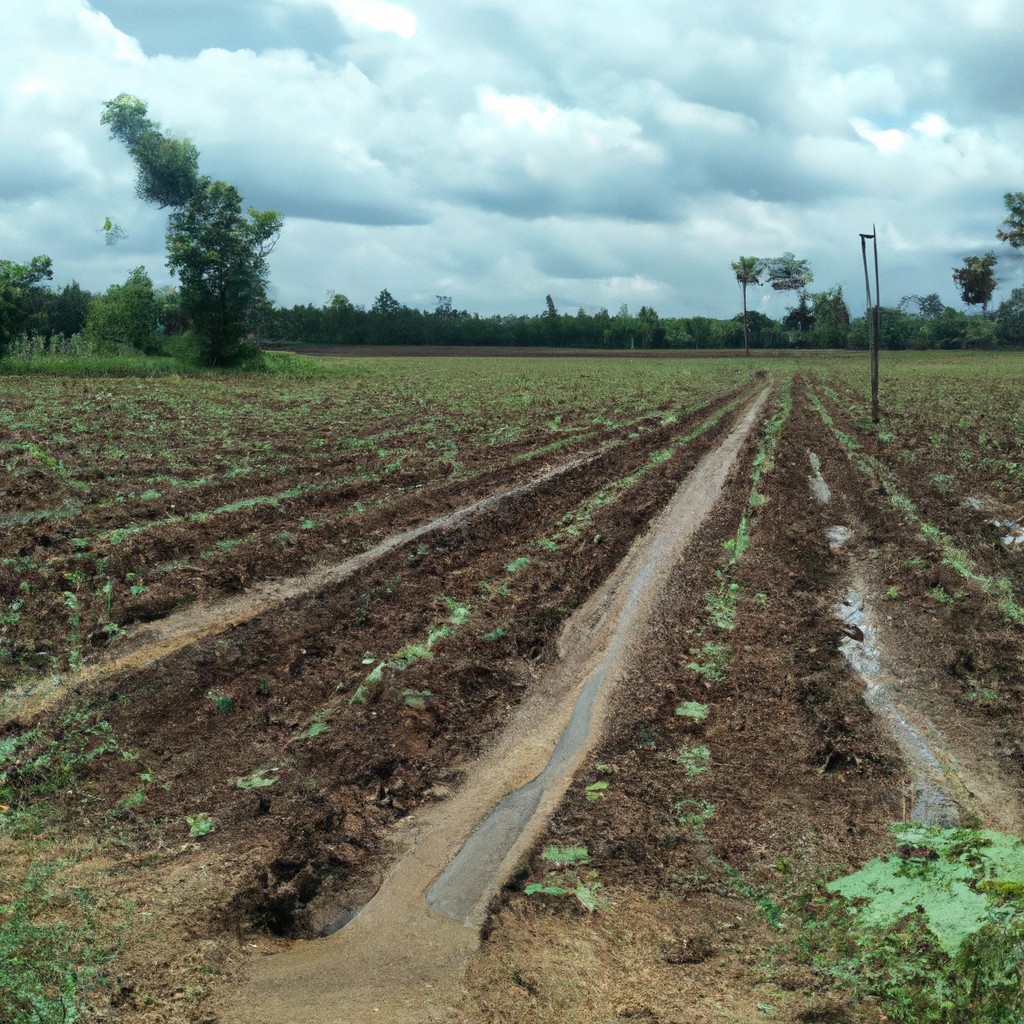Regenerative agriculture aims to restore soil health and fertility, and one of the crucial components in this process is the sustainable use of fertilizers.
Regenerative agriculture is a holistic farming practice that seeks to rejuvenate the soil, improve biodiversity, and tackle climate change. Fertilizer plays a crucial role in this approach, but not just any type will do. The key lies in using organic and natural fertilizers that not only provide nutrients to the crops but also enrich the soil and promote the growth of beneficial microbes.
In this article, we will delve into the specifics of using fertilizers in regenerative agriculture, discussing their benefits, types, and application methods. This comprehensive guide will provide you with all the information you need to make informed choices about fertilizers in your regenerative farming practices.
Key takeaways:
- Organic and natural fertilizers are essential in regenerative agriculture.
- Using natural fertilizers enriches the soil and promotes beneficial microbes.
- Natural fertilizers improve soil structure and slow-release nutrients for long-term benefits.
- Regenerative agriculture techniques can replace synthetic fertilizers over time.
- Regenerative agriculture enhances biodiversity and promotes a healthier ecosystem.
Look Inside:
Understanding Regenerative Agriculture

This farming approach is rooted in the concept of mimicking nature to create a resilient, self-sustaining agricultural ecosystem. It aims to replenish soil health, increase biodiversity, sequester carbon, improve watersheds, and enhance the resilience of farming systems.
The practice goes beyond sustainable farming by not just preserving, but enhancing soil fertility and farm biodiversity. Methods used often include crop diversification, cover cropping, no-till farming, and strategically planned livestock integration.
The driving concept is to create a farm system that works with nature, rather than against it. By understanding these key elements and their interconnectedness, practitioners can effectively utilize regenerative agriculture tools, such as selected natural fertilizers, to harness maximum benefits for the soil and ecosystem.
Principles of Regenerative Agriculture
This farming method integrates a variety of practices, all aimed at improving the soil’s health. The primary principle is to mimic nature’s biodiversity, enabling a symbiotic relationship between the soil, plants, animals, and humans. It does so by avoiding tillage and synthetic fertilizers, implementing cover crops, promoting diverse plant species, and encouraging livestock integration.
By cycling nutrients and water efficiently, soil organic matter increases, enhancing resilience to climatic changes. This revitalized farming ecosystem not only increases yields but also reduces greenhouse gas emissions. It’s an active solution to food security, rural livelihoods, and environmental sustainability.
The Role of Fertilizers in Regenerative Farming
Fertilizers in regenerative farming function as nutrient suppliers and soil health boosters, in contrast to conventional perceptions of solely crop nutrition.
The approach emphasizes the utilization of natural and organic fertilizers that feed both the plant and the soil, nurturing the symbiotic relationship between them.
Natural fertilizers, such as compost, green manure, or animal manure, improve the organic matter content and microbial life within the soil, enhancing its fertility and capacity to sequester carbon.
Moreover, their slow-release nature ensures long-term nutrition for crops, minimizing nutrient leaching which could potentially harm surrounding ecosystems.
This holistic approach to fertilization is, therefore, integral to promoting resilience in the face of climate fluctuations and environmental stressors.
How Fertilizers Influence Soil Health
Natural fertilizers used in regenerative agriculture practices play a fundamental role in enhancing soil health. They contain a broad spectrum of nutrients, including nitrogen, phosphorus, and potassium, essential for plant growth. Additionally, these fertilizers release these nutrients slowly, ensuring a steady supply to the plants while minimizing leaching into groundwater.
Moreover, organic fertilizers contribute to improving the soil’s structure, promoting the retention of water and nutrients. They also help increase the soil’s organic matter content, which is instrumental in encouraging the proliferation of beneficial soil microbes. These microbes further break down organic matter into plant-available forms, creating a sustainable cycle of nutrient supply.
Therefore, the use of fertilizers in regenerative agriculture directly influences soil health by replenishing nutrient content, encouraging beneficial microbial activity, and enhancing the physical structure of the soil, leading to strong, productive plants and a robust ecosystem.
How Can Regenerative Agriculture Replace Synthetic Fertilizers?
Utilizing organic matter is key to this transformation. Composts, cover crops, and animal manures act not only as nutrient providers but also improve soil structure, water holding capacity, and boost beneficial microbial activity.
Another revolutionary technique is utilizing green manures. This comprises specific plant species planted between cropping periods. When chopped and tilled back into the soil, these plants decompose, releasing nutrients back into the soil.
Additionally, establishing a longer rotation of crops assists in nutrient cycling, prevents disease build-up, and improves overall soil fertility.
Interplanting, often pairing nitrogen-fixing legumes with other crops, also contributes towards natural fertilization.
These methods, combined correctly, can gradually decrease, and potentially end, the reliance on synthetic fertilizers.
Comparison: Conventional Vs. Regenerative Agriculture Fertilizing Techniques
Conventional farming often relies heavily on synthetic fertilizers for crop growth. These fertilizers offer a quick nutrition fix but can lead to soil degradation over time due to the lack of organic matter addition. Overuse can result in nutrient runoff, contributing to water pollution and soil hypersaturation affecting beneficial soil organisms.
On the other hand, regenerative agriculture fertilizing techniques prioritize the use of organic and natural fertilizers, like compost and green manures. Natural fertilizers enhance soil fertility over time, maintain beneficial microbial communities and prevent nutrient runoff, thus promoting biodiversity and long-term soil health.
Despite requiring more management and time initially, these techniques offer long-lasting and environmentally friendly benefits, contributing to a more sustainable agriculture system.
Pros and Cons of Regenerative Agriculture Fertilizers
The adoption of organic and natural fertilizers comes with its unique set of advantages and challenges.
On the upside, these fertilizers can significantly enhance soil fertility by increasing organic matter and replenishing essential nutrients. They foster a healthy ecosystem in the soil where beneficial bacteria, fungi, and other microorganisms can thrive, boosting plant resilience and productivity. The use of natural fertilizers also reduces reliance on synthetic variants, cutting down the environmental impact due to run-off and greenhouse gas emissions.
However, transitioning from conventional to regenerative fertilizing techniques isn’t without hurdles. The initial cost of organic fertilizers can be higher than synthetic counterparts, posing financial challenges for farmers. Additionally, these fertilizers often require more labor-intensive application methods and longer intervals to show tangible results on yield. There’s also a need for farmers to acquire new skills and knowledge related to correct use and management of natural fertilizers.
Given these considerations, it is important to factor in both short-term challenges and long-term benefits when integrating regenerative agriculture fertilizers into farming practices.
Impact of Regenerative Agriculture On Biodiversity
A profound positive influence is seen when shifting to this agricultural practice. Regenerative agriculture enhances biodiversity by creating an environment where various organisms can thrive.
Strategic use of organic fertilizers creates a nutrient-rich soil ecosystem that benefits not just the crops but also earthworms, insects, and a wide array of microorganisms. This microbial diversity aids in nutrient cycling and organic matter decomposition, leading to healthier plant growth.
Moreover, this form of agriculture discourages monoculture and encourages crop rotation, further contributing to the diversification of species in a given field. This intricate web of biodiversity subsequently boosts the resilience of the farm ecosystem, making it better equipped to deal with pests, diseases, and climate variability.
Steps to Transition Into Regenerative Agriculture Fertilizing
Transitioning to regenerative agriculture and its corresponding fertilization methods holds numerous benefits. Still, it requires careful consideration and planning to maximize its potential and minimize challenges.
First, conduct a comprehensive soil analysis. The results will aid in determining the soil’s nutrient content, pH levels, and microbial activity. This data is crucial in deciding the right type and quantity of organic fertilizers necessary for your farm.
Next, slowly lessen your dependency on synthetic fertilizers. While this step may require patience due to a potential initial decline in yields, the long-term benefits such as soil fertility enhancement and cost reduction are substantial.
Lastly, consider employing a crop rotation schedule and cover crops. These practices help break pest cycles, balance soil nutrients, and prevent soil erosion. Through these steps, farmers can adequately transition to regenerative agriculture fertilizing practices for optimal sustainability and productivity.
Future Prospects of Regenerative Agriculture
With increasing awareness of the harmful effects of conventional farming methods, the adoption of regenerative practices is projected to rise. Fueled by concern for climate change and soil degradation, global demand for sustainably produced food is growing.
This shift offers immense potential not only for farmers and agribusinesses but also for the cultivation of crops in a healthier, more biodiverse soil environment. Furthermore, waste management innovations and microbial fertilizer breakthroughs can further enhance the efficiency of this farming approach.
By rejuvenating the earth’s soil and reducing dependency on synthetic fertilizers, this promising method stands at the forefront of a potential green revolution in agriculture.
FAQ
Does regenerative agriculture use fertilizer?
Regenerative agriculture minimally uses synthetic fertilizers, with a stronger emphasis on promoting natural interactions among soils, plants, water, and animals for sustainable outcomes.
Why don’t farmers use regenerative agriculture?
Farmers may shy away from employing regenerative agriculture due to the learning curve involved in adopting new practices, potential rise in undesirable plant growth, and subsequent increased reliance on herbicides.
What nutrients are in regenerative farming?
Regenerative farming generally enriches food with more magnesium, calcium, potassium, zinc, vitamins B1, B12, C, E, K, and phytochemicals beneficial to human health.
Can you use pesticides in regenerative agriculture?
No, regenerative agriculture does not use pesticides, instead, it incorporates practices like using cover crops and mulch to maintain soil health.
How does regenerative agriculture contribute to soil fertility?
Regenerative agriculture contributes to soil fertility by using techniques that rebuild and replenish soil organic matter and restore degraded soil biodiversity.
What kind of pests can be managed using regenerative farming methods?
Regenerative farming methods can manage pests such as aphids, cutworms, armyworms, corn borers, and spider mites.
What are the implications of regenerative agriculture on farm biodiversity?
Regenerative agriculture positively impacts farm biodiversity by improving soil health, promoting diverse ecosystems, and supporting a balanced population of beneficial insects and other organisms.




